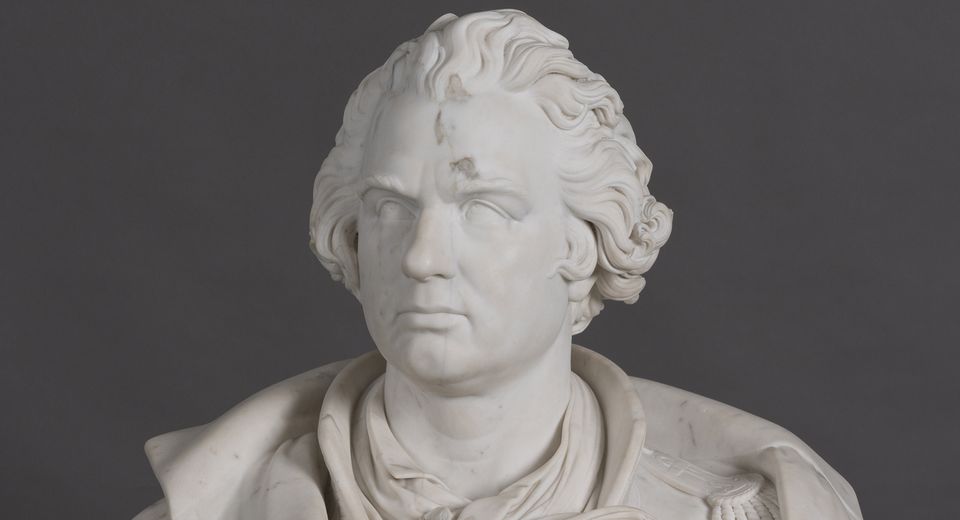Bust of Laperouse
Paris
Photographic print on baryta paper
Deposit of the Louvre Museum
This marble bust, created by a sculptor now renowned for his monumental works, brings to life Jean-François de Lapérouse, an emblematic 18th-century naval officer. The mystery that has long surrounded the disappearance of the Astrolabe and the Boussole, the frigates of the round-the-world expedition he undertook, including his crew and possessions, has helped to make him a legendary sailor.
The death of a great explorer
In 1785, Jean-François de Galaup, comte de Lapérouse, left Brest with the frigates l'Astrolabe and la Boussole for a round-the-world expedition. Commissioned by Louis XVI to complete James Cook's discoveries in the Pacific, he was a naval officer and a renowned explorer. However, he was lost in 1788. Nearly 40 years later, and after several fruitless searches, traces of the expedition were finally identified on the Vanikoro reefs by Peter Dillon. It was in this area that research focused for the next few decades.
The bust of François Rude
In 1828, in the months following the location of the wrecks, the sculptor François Rude began work on a marble bust of the famous navigator. Trained in Dijon and then Paris, exiled in Brussels, he had just returned to France. He exhibited at the Salon and became one of the leading figures in a generation of sculptors who chose to break away from neo-classical idealism.
The marble he chose for his sculptures was considered a particularly noble material, used to represent the great men of the time. However, it is not free of veins, such as those seen on the drapery, or natural stains, such as those on the face, which were made more visible by the cleaning undertaken during the last restoration.
Collection highlight
Discover the must-see works at the Musée national de la Marine.

